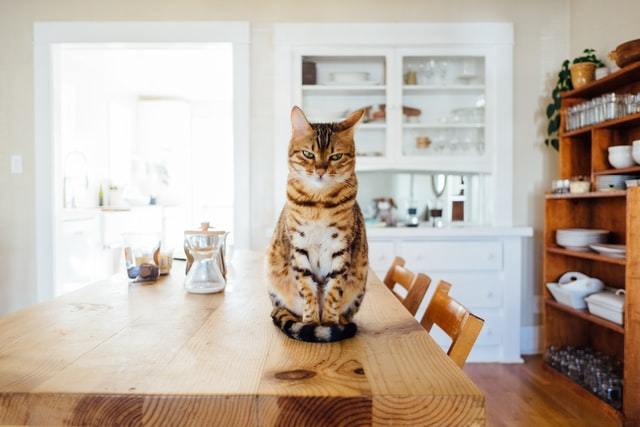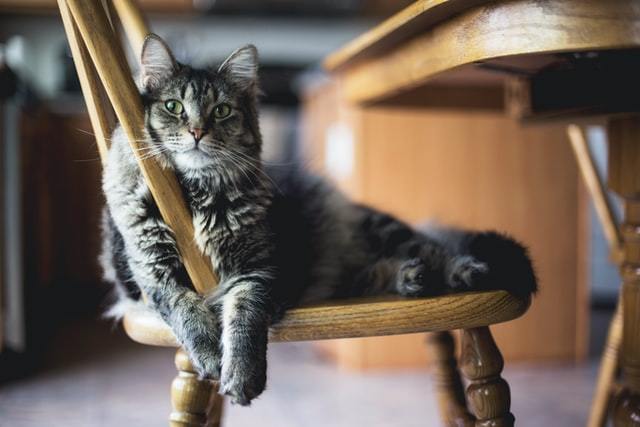Article at a Glance
Gingivitis in cats is an inflammation of the gums which can lead to pain, difficulty eating and even tooth loss. Owners should be on the lookout for associated signs and should try to prevent gingivitis where possible.
- Any cat can be affected with gingivitis but those with underlying medical issues are more at risk
- Gingivitis can often be prevented with good oral care
- Researchers are looking into new methods for the treatment of feline gingivitis. Recent studies have shown that interferons may be useful to control the immune response.
What is Gingivitis in Cats?
Gingivitis means an inflammation of the gums. Inflamed gums will be swollen, red and will bleed easily. This can cause pain and may result in a myriad of symptoms in your kitty. Oftentimes, gingivitis is associated with other issues. These include Stomatitis and Feline Oral Resorptive Lesions (FORLs).
Gingivitis will occur as a result of bacterial build-up on the surface of the teeth. The bacteria form a film called plaque which isn’t visible. The plaque that causes the issue is plaque which forms at the base of the tooth, irritating the local gums. Over time, plaque can mineralise and harden and will then be visible to the naked eye. This is called calculus. This can be seen as a yellow, orange or brown layer on the surface of the tooth. At this stage, cats typically have bad breath and red gums.
What are the Symptoms?
The symptoms of gingivitis are easily missed by even the most dedicated owner. This is because cats dislike having their mouths examined and are not ones to make a fuss when in discomfort. Unless we go looking for gingivitis, it will probably not be seen. This is why most cases of gingivitis are diagnosed by a vet during a cat’s routine annual check-up.
Possible signs that can be seen at home would include:
- Difficulty eating food and a preference for soft food vs dry food
- Bad breath (halitosis)
- Visibly red and swollen gums
- Drooling
- Drops of blood in drool
- Reluctance to be social and irritability
Causes of Gingivitis in Cats?
The true cause of gingivitis is plaque build-up. Plaque naturally builds up over time as cats eat food which cakes on to teeth. Disease-causing bacteria form a film on the teeth if this food is not removed quickly enough. We can help to remove this film by tooth brushing, feeding specific diets and using mouth cleaning products.
Some cats are more prone to gingivitis than others. Certain breeds are affected more frequently. We can also see gingivitis more in certain viral carriers. Those who are infected with Calicivirus, FIV and FeLV are more likely to develop gingivitis over time. This article discusses how gingivitis can be more severe in these individuals. Those with underlying medical issue such as diabetes will regularly suffer from gingivitis.
If your cat has teeth that overlap or retained deciduous teeth he is more at risk of developing periodontal disease. Deciduous teeth that do not fall out when they should, will need to be surgically removed. This is most commonly done for canine teeth and can sometimes be done at the same time a cat is neutered.

Treatment of Gingivitis
Most owners are keen to know how to treat gingivitis in cats. Once gingivitis has established, prompt treatment is required to prevent it worsening. As it causes discomfort and difficulty eating, the sooner it is treated the better. If caught early, we can usually reverse gingivitis completely.
It is important that a vet examines your cat’s mouth to assess for any other oral issues such as Feline Oral Resorptive Lesions (FORLs). They should also give your cat a full health check to rule out any medical issues such as viral infections or immune-mediated diseases.
The only real way that a cat’s mouth can be thoroughly examined is under sedation or anaesthetic. A vet will scale and polish all of the teeth. They will also check the depth of any gum pocketing and may x-ray the tooth roots. Sometimes, cats require antibiotics, anti-inflammatories and pain relief. Most cats need a few dental cleanings during their lifetime.
More recently, we are looking at novel therapeutic approaches for the treatment of gingivitis. This interesting study which was published in 2020 looks at the use of canine interferon alpha for the reduction of feline gingivitis.
How to Prevent Gingivitis?
In the ideal world, we would prevent gingivitis in cats before it occurs. However, this is easier said than done and is not always achievable in every cat.
Introducing daily tooth brushing from kittenhood is the aim. Realistically, this isn’t done often as owners aren’t aware of the importance and cats can struggle to tolerate having a toothbrush in their mouth. However, when we brush teeth every day, it is unlikely a cat will go on to develop gingivitis. Some cats will tolerate finger toothbrushes better than traditional toothbrushes. Read here to learn more about how you can brush your cat’s teeth for them.
As well as tooth brushing, there are enzymatic cleaners which can be put in food and water that can help to prevent plaque build-up. Similarly, gels can be purchased which are rubbed on the surface of the teeth and gums. You can also try some natural cleaners (like out Scrub and Shine Dental Powder)
Feeding a prescription diet aimed at promoting dental health can be useful. Owners should feed hard kibble rather than wet food as it is less associated with gingivitis and calculus formation.
By preventing our cats from developing infections, we can also minimise their risk of gingivitis. This means keeping them away from cats who are unwell and ensuring their vaccinations are up to date. If a cat goes outdoors, they must always be neutered to ensure they are not at risk of sexually transmitted diseases such as FIV.
Dr. Linda Simon, BVMS, MRCVS
Veterinary surgeon,Dr. Linda Simon MVB MRCVS is a locum veterinary surgeon who has worked in London for the past 8 years. She graduated top of her class in small animal medicine from UCD, Dublin. She is currently a member of the Royal College of Veterinary Surgeons.



